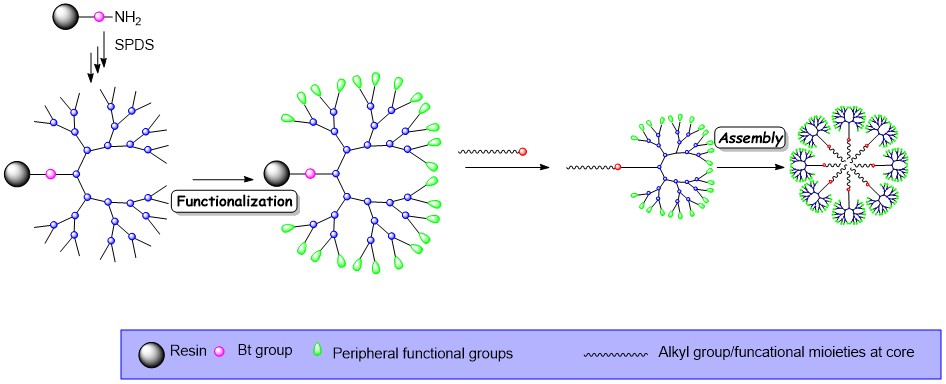| Technical Name | A METHOD OF SYNTHESIZING DENDRIMERIC AMPHIPHILE | ||
|---|---|---|---|
| Project Operator | Kaohsiung Medical University | ||
| Project Host | 高佳麟 | ||
| Summary | A dendrimer amphiphile (DA) possesses hydrophobic and hydrophobic segments as well as branch structures. |
||
| Scientific Breakthrough | A newly developed safety-catch resin was developed for the solid-phase synthesis of dendrimer amphiphiles. With this approach, their preparation could be divided into two parts-synthesis of hydrophobic and introduction of hydrophilic segments. Both segments could be individually synthesized and coupled together at the cleavage step. By controlling the amount of the hydrophobic segment, the desired product and remaining on-resin dendritic segment could separate through simple filtration. By using solid-phase synthetic methods, the dendritic structure was prepared on the resin. With such insoluble resin, excess reagents applied to increase the reactivity and suppressing the side reactions which improve yields and purity of dendritic products. |
||
| Industrial Applicability | Dendrimer amphiles (DA) have been used for the modification of nanoparticles and fabrication of semiconductors. Besides, the assembly bodies of DAs have been developed as nanoreactors for preparing regulated polymers and conducting efficient organic reactions. |
||
| Keyword | self-assembly Amphiphilic molecules Dendrimer Solid-phase synthesis Delivery vehicles antimicrobial agents Vaccine Drugs Imaging agents Amphipihilic branched peptide | ||
- clkao@kmu.edu.tw
other people also saw







